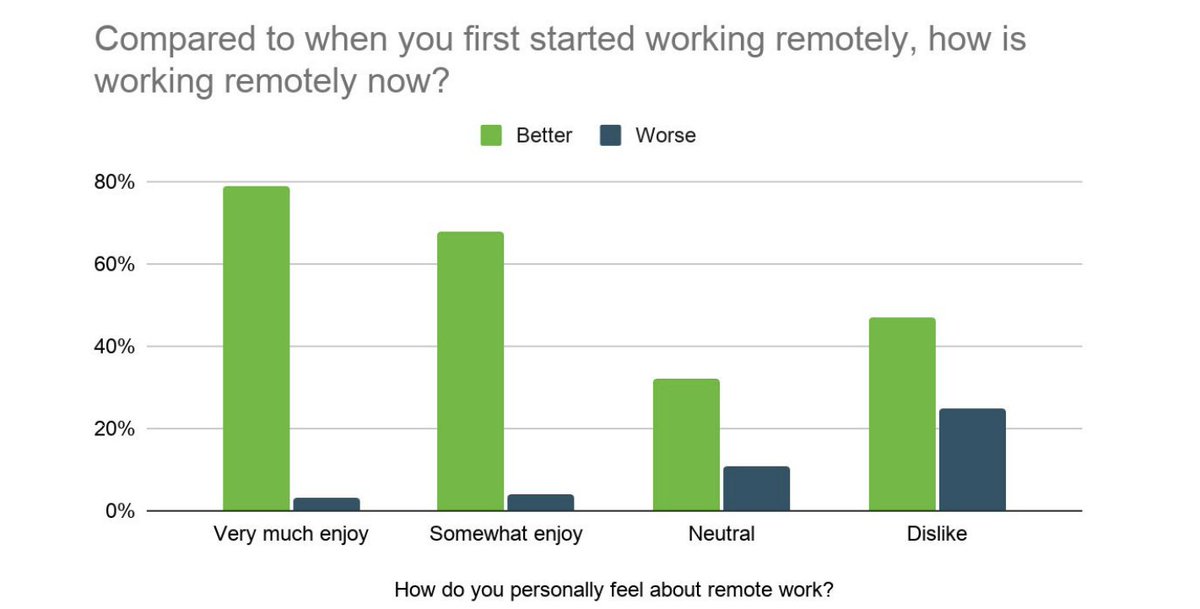New report alert: I have a new report at Upwork checking in on remote work based on a survey of 1,000 hiring managers. A few results to follow in this thread https://www.upwork.com/press/releases/economist-report-future-workforce
We found 41.8% are still working remotely full-time, and 15% part-time. This is very close to Gallup, who find 58% remote at least sometimes. The results are relatively consistent with Barrero, Bloom, and Davis who find that 41.4% were working from home in October.
This is higher than the BLS, but the BLS refers to remote work because of COVID specifically, and it looks to me like the plurality of evidence is well above the BLS at this point.
One thing I wanted to explore was blockers to remote work. What we found was whether managers personally enjoyed or disliked remote work was a big driver of how they felt it was going.
We also looked at long-run plans. Hiring managers say a year from now about 1 in 4 will be fully remote, and five years from just over 1 in 5 will. That's a significant share of the workforce.
Finally, my favorite data point. In our earlier survey, we found that more hiring managers in April reported that remote work had increased productivity than decreased it. But one counterargument was that it would get worse over time....
The idea was people would get sick of working remote, team cohesion would break down, etc. So we asked "Compared to when you first started working remotely, how is working remotely now?" 68% said better, and only 5% said worse.
This is not surprising to me, but I think to remote critics it will be. Learning by doing, selection effects, and adaptation all mean the positive productivity effects are likely to grow over time, not shrink.
To close I definitely want to acknowledge there is a ton of uncertainty around how many are working remote today and before. I think for fully remote, most likely is 5% to 10% before, and 35% to 45% now. My guess is Bloom would agree with this.

 Read on Twitter
Read on Twitter




